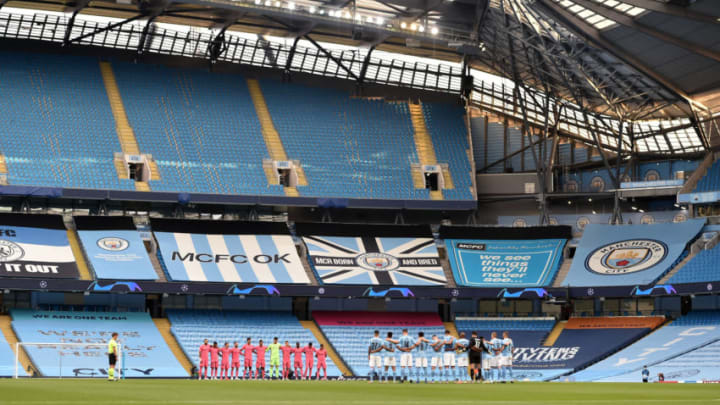Blue Empty Seats At Home: The Return of Fans to the Stadiums
By David Crook

Since the Covid pandemic began, matchgoing Manchester City fans have had to be content with watching games on TV. As the self deprecating City song goes, there have been “blue empty seats at home”.
The last live football game I went to was the 2:1 victory over Aston Villa in the Carabao Cup Final at Wembley on 1 March 2020. As a match going season card holder at Manchester City it is difficult to recall the last time I went 6 months without attending a single game. Stuart Pearce time probably!
Since football restarted in June it has been a fanless experience in empty stadiums, played against the swearing of the players in the vast echoing stadiums and supplemented with fake crowd noise on TV to keep armchair viewers happy. In many ways watching football on TV has become something of an anodyne experience, sanitised and perfunctory.
Since June the British Minister for Culture has indicated the football authorities should start to make suggestions as to how fans may return to stadia as the coronavirus pandemic has started to slow.
More from Man City Square
- Rodri believes City can have even more success this season
- Grealish, Stones, and Kovacic will NOT play tomorrow
- My Manchester City UCL Group Stage predictions
- After Injury Guardiola is back in Etihad
- Phil Foden Scores Opener for England Against Scotland
Much of this planning has been carried out behind closed doors and there was much hanging upon the possibility of using the 2020 Community Shield as a large scale testing event.
However, as things tend to do, the situation changed and the real prospect of a second wave of pandemic began to materialise and consequently it appears as though the British government withdrew their support for the Community Shield experiment.
In other countries though the situation is different and widespread planning has taken place in both Germany and France to support the return of fans. Indeed, looking at the proposals in those countries there are probably lots of clues about what a return to football for fans will look like for Manchester City.
In Germany there is a clear assumption that away fans will not be permitted at all for three reasons. Firstly there is a desire to limit fan travel up and down the country. Secondly there is the hope that allowing home fans to use away areas may allow social distancing to occur and ultimately increase the number of fans in the stadium. Finally, no away fans means reduced pressures on public transport systems.
Germany are also planning no standing in grounds, limited food and toilet facilities and no service of alcohol. The plan is about permitting a reduced capacity in the grounds – with fewer fans spread out to maintain social distancing.
Quite how Manchester City may start to implement some of these ideas is unclear although there are some announcements expected this week as the Club prepare for the return of the Premier League on 12 September.
It appears as though the expectation is that in September there will not routinely be any fans in the grounds as games continue behind closed doors.
However, the Women’s Super League could prove to be an exception as smaller crowds may allow the planning and trialling of crowd management. The other muted exception may be the Carabao Cup early rounds in September.
October may be the earliest for fans to return to return to Premier League action, once these test events have been completed. Even then though we can expect most Stadiums operating initially at around 30% of capacity, although the Etihad Stadium – with it’s wide concourses and toilet facilities may be able to accommodate a higher percentage of attendance.
Given Manchester City have around 40,000 season card holders and a potential upper capacity limit of around 17,000 quite how those seats are allocated is tricky both for the Club to organise and match going fans to accept.
At the very least there would appear to need to be a ballot system in place – coupled with track and trace forms.
Consequently, there is the very real prospect that the whole season card scheme could be suspended for a year and instead loyalty points are used to decide supporter positions in open ballots.
Whichever way you look at it, the disruption is likely to continue throughout 2020/21 season and us match going fans may have to continue to wait on the sidelines, hoping to eventually return one day.